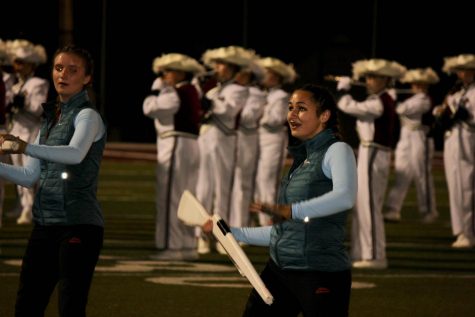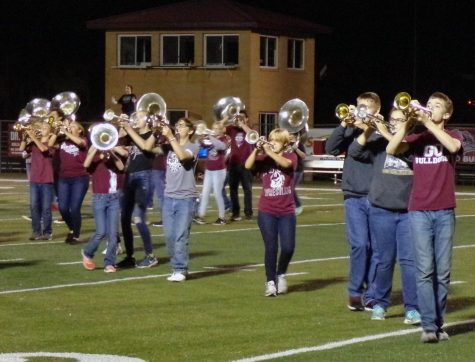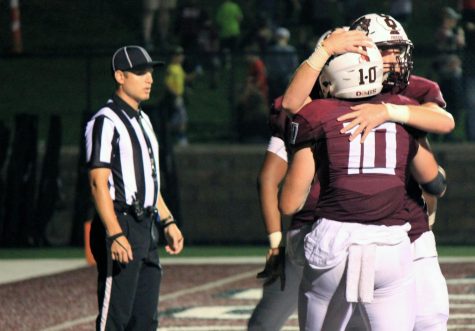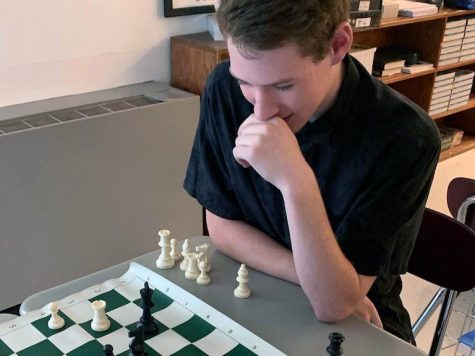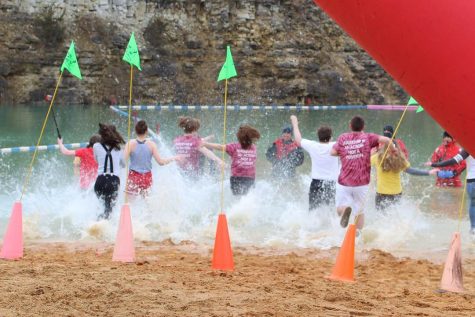Local non-profit takes a stand against rape, culture that hides it
Rape culture is everywhere in our lives. It is not always as obvious as a rape joke, or an unwanted grope at a party, but rather many little messages coming from all around us that all adds up to create a dangerous culture for women. These messages can come from popular movies such as Superbad, which opened at number one in the United States box office and grossed almost 170 million dollars worldwide. In the film, a girl comes onto the lead, Evan, very strongly while she is intoxicated and he is not. Evan tells her no, and at the end of the film is hailed for being such an upstanding guy for not taking advantage of her while she is drunk. The media plays a large role in perceptions about consent in how it portrays women in it’s ads.
“Rape culture exists on a couple of different levels. It essentially exists in part by the media and things just as small as commercials. Hardee’s doesn’t sell a burger without a half naked woman eating it and dripping it on herself and lots of car companies don’t sell fancy vehicles without women standing next to them. If you see any pictures from a car show, there’s always women in bikinis standing next to them. Just the whole media surrounding the idea that women sell things, and not necessarily women, but women’s bodies sell things. I think that’s kind of where rape culture starts and it starts to kind of take away the human aspect of women in general and makes them more of objects. You’ll see ads where women’s bodies are compared to cell phone cases and you’re only seeing their torso and there’s not legs and no head and no arms and no brain. I think rape culture starts there and then it’s manifested through jokes and movies,” Koree Klaxton-Miller, violence prevention voracity facilitator for the Russell House said.
The sexualization of females is a component of rape culture and can go largely unnoticed in society. It starts at an early age and continues throughout the female’s lifetime.
“You can go shopping for a little girl’s outfit and find diaper covers that say, ‘Does this make my butt look big?’ or shorts in the little girl’s department that say, ‘cutie’ across the rear end and it’s just this hypersexualized culture that women are supposed to be sexual creatures and that’s what we’re supposed to view them as. In High School, I think I see it a lot in the way that girls dress. I see not necessarily rape culture, but this hyper sexualized image of girls. The shorts are shorter and the shirts are tighter and they’re cut lower. A lot of clothes that I see girls wearing don’t look like they’re for comfort, perhaps they are, I’m not sure, but there’s nothing left to the imagination. Everything’s always super short, and then they’re sticking to desk chairs and they’re uncomfortable,” Klaxton-Miller said.
On one side, girls face the pressure to wear skimpy outfits, but on the other side are shamed for wearing such impractical clothing.
“On one side, boys will say, ‘We want a woman who dresses sexy and gets our attention’ and things like that, but then if she gets sexually assaulted she shouldn’t have been dressing like that. So it’s like where do I pick and choose the line? Do I dress sexy and hope I get attention when I go out and that’s what I’m looking for, maybe I’m hoping to find a boyfriend or someone to chat with or whatever and if I do get sexually assaulted now it’s my fault that I did it? It leaves women in this really gray area of what do I do. Do I get dressed and then put on a sweater and a scarf and then if I see someone I like I take it off and see if they notice me and then put it back on if they don’t? It leaves girls in a very confusing state of mind of what is too much and what is not enough,” Klaxton-Miller said.
Victim blaming in terms of what the victim is wearing is a large aspect of rape culture. Sometimes this idea goes so far that it is even brought up in court to try to defend the perpetrator, saying that the victim knew that she would be attacked or wanted attention.
“A lot of times when rapes and sexual assaults are happening, the first thing that people ask is ‘Well did she deserve it? What was she wearing? Why did she go there?’ and I tell people all the time; you can be raped in a hoodie and sweatpants, people don’t care to be realistic about it. Your clothing doesn’t necessarily have an impact on should you be raped or not. I mean that’s not a fair statement. If I’m a doctor walking down the street in expensive clothes, does that mean I should be robbed? Because I look like I have expensive clothes? I mean that’s not fair. And we would never say that to a robbery victim. But to a sexual assault victim we would say that. ‘Why would you wear such a short skirt and not expect someone to take advantage of you? If you were going to a party you should have been more covered up’ and things like that,” Klaxton-Miller said.
Some victim blaming occurs when excuses are made for males nature using the “Boys will be boys” mentality and saying that they are simply sexual creatures and cannot control themselves. Perpetrators of rape culture excuse the attacker saying that that’s simply how boys are and that the victim should have known that they were placing themselves into a dangerous situation.
“[Some people] kind of excuse the males behavior and put the blame back on the female. Why would you walk away with him if you didn’t know him? Why would you sit down in the corner with him if you didn’t know him? Instead of ‘Why would he take advantage of someone without permission? Why did he think it was okay to do this without getting her consent?’ And I think we live in a society where we’re much quicker to blame the victim than we are to question the perpetrator. And we make it the victims fault where ‘You should have known better, and you should have done x,y and z. Instead of saying ‘You could have been there with someone who wasn’t a perpetrator and that would have never happened,” Klaxton-Miller said.
Even if a woman sets out to be aware and careful, certain social atmospheres, especially on college campuses, can make it more difficult to do so.
“I’ve seen college parties where the punch bowls are set for two different genders, like the males drink out of one bowl and the females drink out of another bowl. The girls bowl has more alcohol in it hoping it will make them consent to doing things and not realizing that consent after being intoxicated doesn’t count. The social scene is where I see it the most on college campuses as opposed to in the classroom. [Rape culture can also be seen in] making decisions after being at a party that they may not have made if they had not been at that party. Seeing that the social environment that they were in has kind of influenced their decision as opposed to if they were a separate entity by themselves they would not have made that decision,” Klaxton-Miller said.
Rape culture is furthered by the fact that many crimes go unpunished. Many crimes on college campuses go unpunished because when alcohol is involved many victims feel less credible due to their impaired memory of what actually happened. Victims may also be deterred from prosecuting because sexual assault is one of the few crimes where the victim has to testify in court.
“If I get robbed I can say I don’t want to take the stand, but if I get raped I have to take the stand.That can deter people from wanting to press charges because I don’t want to have to relive it in front of a court of fifty people and the person who assaulted me as well,” Klaxton-Miller said.
Although females are more obviously affected by rape culture, boys may also face societal pressures from the opposite side of the issue.
“I think it’s sometimes easy to sell boys short in saying that ‘Oh boys will be boys. They like girls. This is what they do.’ When in reality that’s not what all boys do. And that’s not how all boys think. Sometimes when you get people in a group and a few of the stronger personalities in a group feel this way, it’s easier for people to go along with it,” Klaxton-Miller said.
Most of the pressure boys face comes from competition with their peers.
“I have conversations with kids just about the simple if a girl goes on a date or a boy goes on a date when they come back what do they friends want to know. And a lot of the girls say they want to know ‘What did you wear? Did he open the door for you? Did he pay for you? Where did you guys go?’ and the boys are like, ‘I wanna know how far you got.’ I mean, if those are the questions that our friends are asking us after a date, you can see where the social pressure starts to come in. And if your answer is like, ‘We went to the movies and then we came home’ and then your boys are like, ‘No no no, we don’t want to know where you went, we want to know what you did’ and he’s like ‘That’s what we did.’ Then there’s that social pressure that comes in if your friends are asking those questions. I also think that if the boys who don’t agree with that spoke up a little more then I think it would start to quiet the comments,” Klaxton-Miller said.
Education is a key component in preventing sexual assault. If males were raised to ask permission and respect boundaries instead of growing up hearing the “boys will be boys” excuse it could help break down rape culture.
“I feel like when we say ‘preventing rape,’ when we use the word prevention, it sounds like I’m going to give you these tools and then this is never going to happen to you. I would say that education is the key component. We’re never going to be able to prevent sexual assault from happening as long as there are predators walking among us. What we can do is educate people to be more aware of their surroundings, to pay attention to the cues and to be more socially respectful of each other’s wishes and decisions, whether that comes in to agreement with what you’re hoping to get out of the situation or not. If we can start focusing more on that, on how do I get permission and consent and how do I also respect it while knowing I may not get my own agenda met I think we can reduce the number of sexual assaults that happen,” Klaxton-Miller said.
In order to remove rape culture from society, it first needs to be removed from casual conversations.
“We use the word rape casually in conversations when we feel like we’ve been done wrong and things like that and if you’re using it that way around someone who is an actual rape victim, it can be very traumatizing, it can be triggering, and it can make just walking through the grocery store very awkward and uncomfortable,” Klaxton-Miller said.
Rape culture prevention can start small, but in order to completely eradicate it from society it would require a renovation of how women are portrayed in the media.
“Ideally, media would quit advertising things using women as their advertising ploy. Media is a multimillion dollar industry and unfortunately in our society sex sells and that’s why it’s working. So unfortunately in order to prevent that we would have to get to those people higher up and have those conversations with them that if this was your wife, daughter, granddaughter, niece with the cheeseburger dripping down her chest and people watching it, would you feel okay? And I would hope that the answer is no, that they wouldn’t want that to be their wife. But when it’s just a woman that they employ and write a paycheck to, they don’t think twice about it because they don’t have any emotion invested in that relationship. When we start looking at things as how would I want my mother, sister and niece to be portrayed, I hope most people would say not the way that they are in the media,” Klaxton-Miller said.




